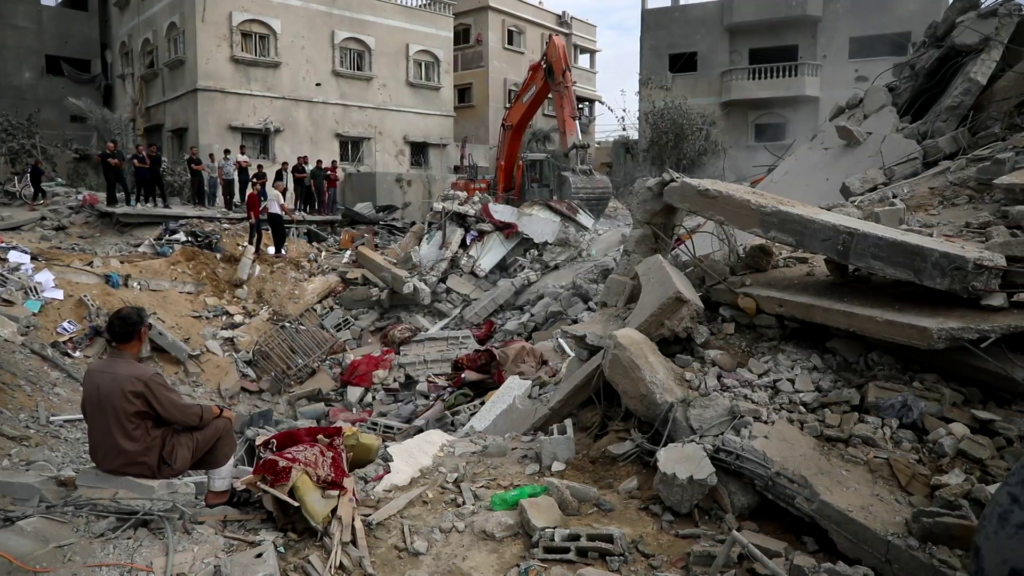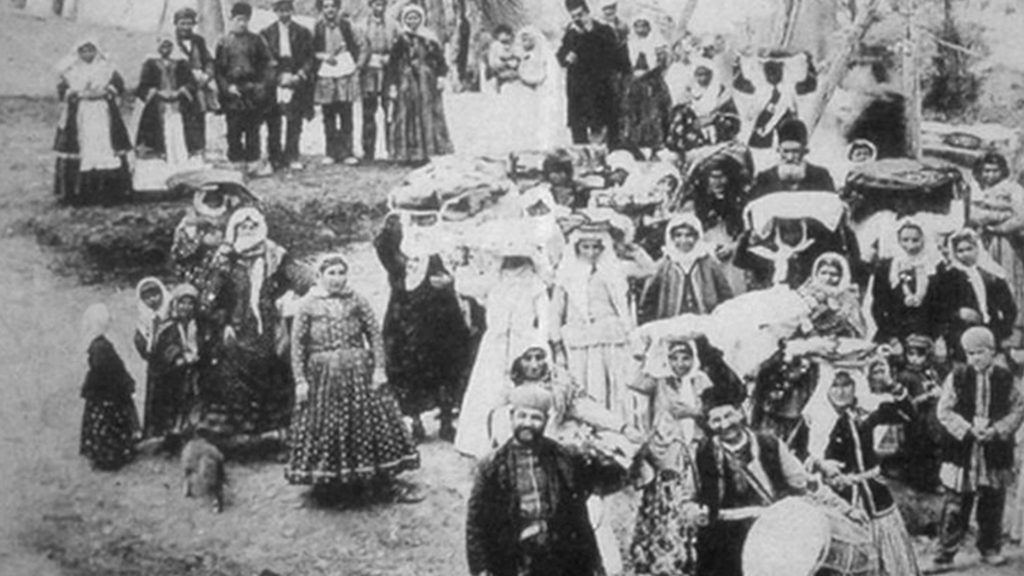Robin Fleming
After watching the devastation unfold in Gaza, more than 11,000 Palestinians killed , surrendering civilians being shot at when trying to flee the flattened city, newborn babies being removed from incubators due to a power outage I find myself questioning how its possible for people to continue to justify or denial the actions of the Israeli Defense Forces (IDF).
Well, Adam Jones, a scholar and expert on genocide, answers this question exactly in his book ‘Genocide: A Comprehensive Introduction’ where he outlines the most common methods of Genocide Denial. I intend to explore these methods, look at historical examples of these methods being implemented, and see if we can recognise any of them being used now by the Israeli Government.
But before understanding how genocide can be excused or denied, let’s make sure we understand exactly what genocide is. Article 2 of United Nations (UN) Resolution 260 A (III), approved by the General Assembly in 1948, provides a definition of genocide.
In the present Convention, genocide means any of the following acts committed with intent to destroy, in whole or in part, a national, ethnical, racial or religious group, as such:
(a) Killing members of the group;
(b) Causing serious bodily or mental harm to members of the group;
(c) Deliberately inflicting on the group conditions of life calculated to bring about its
physical destruction in whole or in part;
(d) Imposing measures intended to prevent births within the group;
(e) Forcibly transferring children of the group to another group.

One of the most important, and more difficult points to prove here is ‘Intent,’ but the IDF has made matters easier for us by stating their intent explicitly, with one IDF official saying ‘Gaza will eventually turn into a city of tents… There will be no buildings.” And Israel’s former attorney general who claimed it was necessary “to destroy Gaza, because everything in Gaza, almost every building there, is a stronghold of Hamas”. Israel’s intention is clear here, they want to destroy Gaza and Gaza is full of 2.2 million Palestinians, so I see little meaningful distinction between directly calling for the annihilation of a place, and the population. The first three acts listed in the UN article are incontrovertibly happening, Palestinians are being killed – 11,000 of them, seriously bodily and mental harm inflicted – 26,000 injuries and who can imagine the psychological toll and deliberately damaging conditions of life – how are Gazan’s expected to survive if no buildings and therefore no infrastructure, no hospitals, stores, power plants, remain standing. The answer is – They are not expected to survive.
Imposing measures to prevent birth has not occurred as such, but damaging hospitals, causing power outages resulting in the rising loss of infant’s lives has similar results. I am not alone in making the argument that what we see unraveling before our eyes now genuinely amounts to genocide. Craig Mokhiber recently resigned from his position as the director of the New York office of the UN’s High Commissioner for Human Rights, claiming that the UN had again ‘failed’ to prevent what he called ‘a textbook genocide’ in Gaza.
Now that we hopefully have a better grasp on the term genocide, let’s return to Adam Jones and see what he has to say about the potential methods of genocide denial.
Jones’ list is as follows:
“Hardly anybody died.” When the genocides lie far in the past, denial is easier.
“It wasn’t intentional.” Disease and famine-causing conditions such as forced labor, concentration camps and slavery (even though they may be manufactured by the perpetrator) may be blamed for casualties.
“There weren’t that many people to begin with.” Minimizing the casualties of the victims, whilst the criminals destroy/hide the evidence.
“It was self defense.” The killing of civilians, especially able bodied males is rationalized in preemptive attack, as they are accused of plotting against the perpetrators. The perpetrator may exterminate witnesses and relatives of the victims.
“There was no central direction.” Perpetrators can use militias, paramilitaries, mercenaries, or death squads to avoid being seen as directly participating.
“It wasn’t/isn’t ‘genocide,’ because …” They may enter definitional or rhetorical argumentation.
“We would never do that.” Self-image cannot be questioned: the perpetrator sees itself as benevolent by definition. Evidence doesn’t matter.
“We are the real victims.” They deflect attention to their own casualties/losses, without historical context.

In the next installment of ‘A Deeper Look’ we will explore how these methods have played out throughout history looking at Turkey’s denial of the Armenian genocide as a primary example, and see how many of these strategies are being used by Israel now.
Robin Fleming is an American Researcher who worked with the Rojava Information Centre and specialises in North and East Syria.










